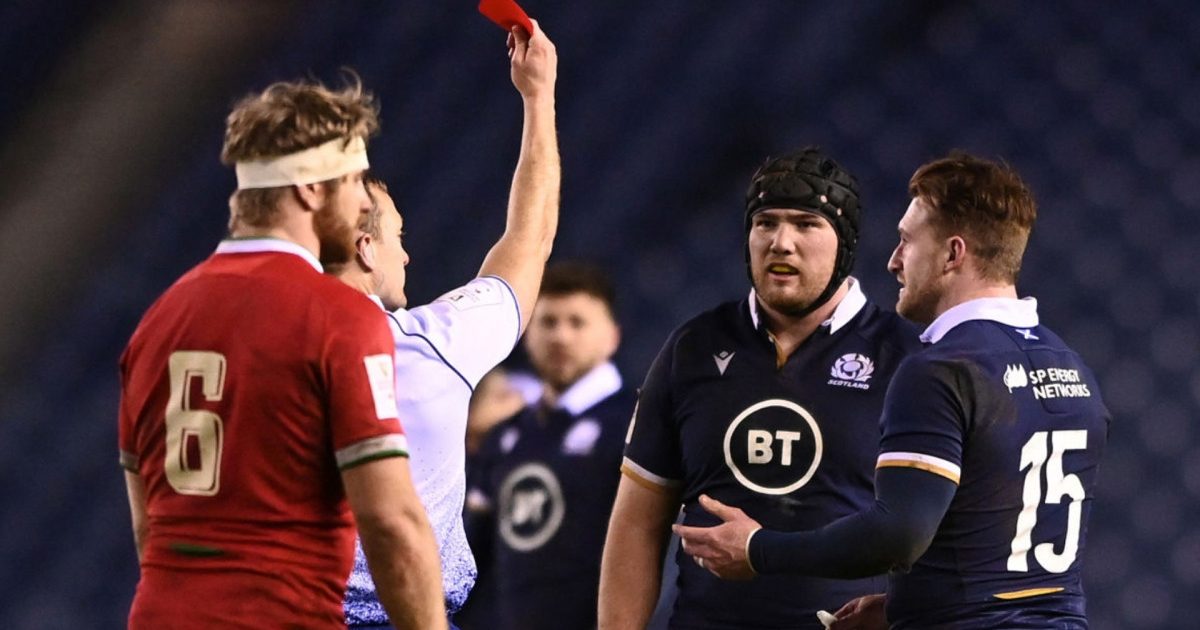Andy Nicol's comments highlight rugby's chasmic divide on player safety

In one corner we have the medical experts and an ever-growing group of 40-something former professional players dealing with a variety of worrying medical diagnoses including early-onset dementia.
But on the other side of the ring sits a significant body of rugby players past and present plus armchair fans who were brought up on tales which glorified courage in the face of extreme violence or playing on after bad head injuries.
And trapped in the middle are the match officials tasked with applying a head contact protocol for which they are subsequently derided for ruining high-profile games of rugby.
From Federico Mendez laying out Paul Ackford at Twickenham in 1990 to Jean-Pierre Rives leading France while smothered in blood and Matt Dawson being unable to remember large chunks of a match after suffering a concussion rugby’s folklore is full of stories which centre on head injuries and their aftermath.
It is the remnants of this ‘hero’ culture which seemingly leads some former players to ignore the medical evidence unless the likes of Steve Thompson are immediately in front of them. Publicly questioning why the match officials “ruined” last year’s Six Nations by issuing red cards to Peter O’Mahony, Zander Fagerson, Bundee Aki, Paul Willemse and Finn Russell – all of which were followed by lengthy bans and therefore found to be entirely accurate based on World Rugby’s protocols – is consistent with this attitude.
Sportsmail’s Chris Foy column which quotes former Scotland skipper Andy Nicol’s comments made as part of “an assembled panel of experts” typifies the two sides of this debate.
On one hand Springbok ref Jaco Peyper’s decision not to show a red card during the recent Ulster v Scarlets match is heavily criticised: “The South African sparked Welsh outrage when home wing Craig Gilroy was let off with a yellow card after slamming his shoulder into the head of Tom Rogers, who went off for a head injury assessment and didn’t return.”
Yet elsewhere Foy agrees with Nicol’s concerns by stating: “A nagging fear within the sport is that another spate of red cards will ruin the tournament. The concern is that marginal, high-stakes disciplinary decisions made by under-pressure referees will significantly dictate the outcome of matches and the title contest, again.”
This old dog is eager to learn new tricks.
– writes Liam Heagney ??? #GuinnessSixNations https://t.co/9Ou7Y5iWVA
— RugbyPass (@RugbyPass) January 31, 2022
By moving away from its traditional stance that saw cards issued only for persistent infringement or foul play where intent was present the contact sport known as rugby union opened a giant can of worms. As a result we routinely see red cards shown following an unintended clash of heads or a smother tackle which marginally misses its intended chest-high target. In the eyes of those in the ‘game’s gone soft’ corner – this laughably means the likes of Danny Cipriani and Jacob Umaga are as likely to take an early bath as rugby’s dwindling band of known hard men.
But – and it’s a big one – the current approach is rooted in medical research and a working party comprising quite a few of our sport’s most respected current and former players, coaches and referees. It is entirely inconsistent to view the plight of Thompson, Mike Lipman, Alix Popham et al with genuine sympathy while simultaneously calling for a less rigorous approach to head contact.
The uneasy middle ground here requires players to be ‘less reckless’ in their approach to tackling, clearing out rucks and joining mauls. This is code for operating at 80 per cent rather than 100 in order to be certain about avoiding contact with a head.
In the litigious world we populate one thing is certain – regulations aimed at improving safety levels are not being scrapped and a return to the days when intent was part of foul play is not happening. In addition, the three-stage evaluation process which considers whether contact is made with the head, how much force is present and whether mitigation exists is about as user-friendly and easy to follow as possible.
All of which brings us back to players needing to represent their country in a full-blooded Six Nations encounter while also finding a way to maintain total control over their emotions and make perfect split-second decisions when going into contact.
An impossible task? Possibly, but it is difficult to see any alternative, and for sure castigating the officials for applying the letter of World Rugby’s protocol – on five occasions last year – is not the answer.












































































Southern hemisphere refs still failing to pull their weight on head contact both nic berry and Peyper failing to apply laws last weekend.
The first thing is that player safety is paramount and the size and weight of players nowadays mean some of the collisions are frightening, until changes are made to the tackle and ruck laws referees are surely in a no win situation.